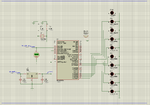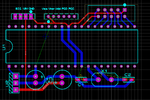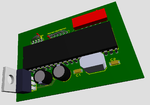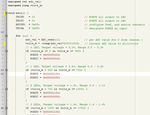shsn
Junior Member level 3

- Joined
- Nov 28, 2012
- Messages
- 26
- Helped
- 0
- Reputation
- 0
- Reaction score
- 0
- Trophy points
- 1,281
- Activity points
- 1,523
Hi,
This is my first time actually getting into microcontrollers and designing my own PCB board, having so much fun
What I'm working on is to measure engine's rotational speed using an array of LEDs, which is essentially 'shift light'.
Once completed this will actually be installed in an open wheel race car that we built in an university society.
Although the project is not yet finished and having a few problems with the PIC but it's getting there.

Schematics. Recieving analogue voltage from Motec ECU to PIC's ADC.

Draft version of PCB layout.

3D model of PCB.

An extract of coding.
Component value choice may not be the optimal value as I'm just getting into the world of MCUs and I don't think the coding is very efficient. Honestly I don't exactly know what I'm doing :lol:
Cheers.
Eric.
This is my first time actually getting into microcontrollers and designing my own PCB board, having so much fun
What I'm working on is to measure engine's rotational speed using an array of LEDs, which is essentially 'shift light'.
Once completed this will actually be installed in an open wheel race car that we built in an university society.
Although the project is not yet finished and having a few problems with the PIC but it's getting there.

Schematics. Recieving analogue voltage from Motec ECU to PIC's ADC.

Draft version of PCB layout.

3D model of PCB.

An extract of coding.
Component value choice may not be the optimal value as I'm just getting into the world of MCUs and I don't think the coding is very efficient. Honestly I don't exactly know what I'm doing :lol:
Cheers.
Eric.
